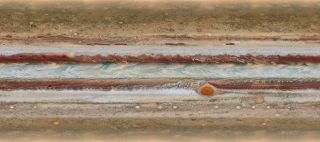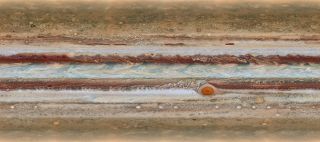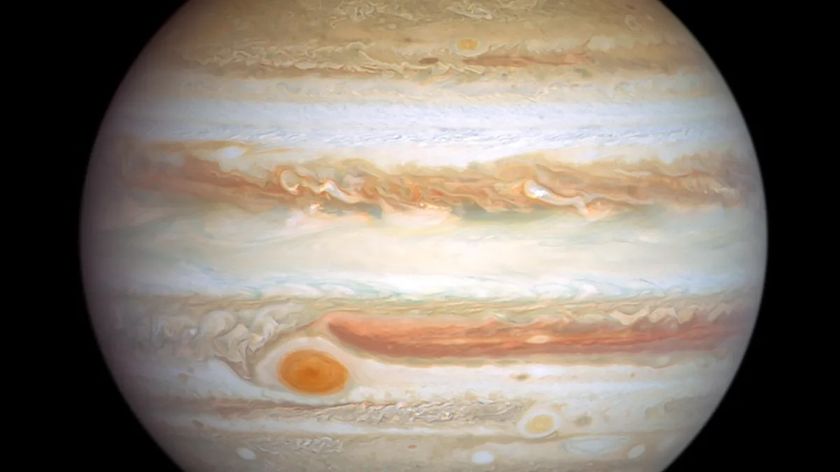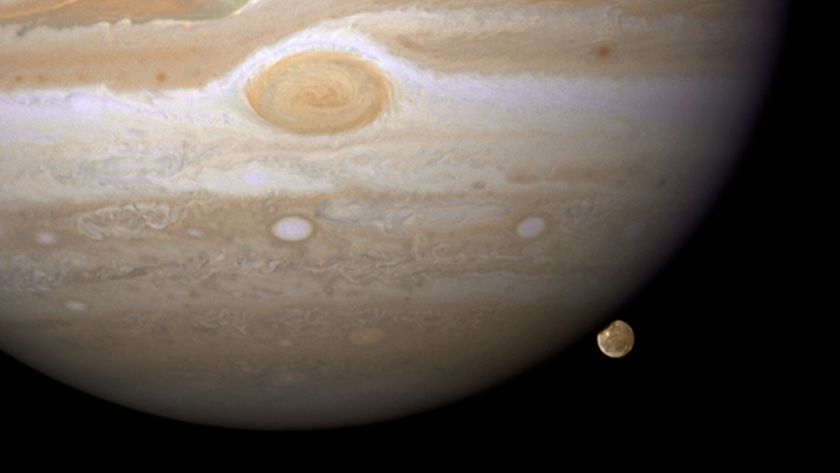Amazing Jupiter Video Shows Slowing Shrinkage of the Great Red Spot
Jupiter's trademark Great Red Spot may be shrinking, but it's not going down without a fight.
Amazing new maps of the Jupiter by the Hubble Space Telescope reveal that the Great Red Spot, a massive storm about twice the diameter of Earth, is slowing the speed at which it shrinks. The Jupiter maps, first in series of annual portraits of the outer planets, also reveal rare wave structures that scientists haven't seen for nearly 40 years.
NASA used the new Hubble images to create a stunning video of Jupiter's changing atmosphere. The images, taken over a 10-hour period, created two massive maps of the entire planet, allowing scientists to measure the speeds of Jupiter's winds, identify different events in its atmosphere, and track changes in the outer layers of the planet. [Watch our narrated look at Jupiter's shrinking Great Red Spot]
Jupiter's Great Red Spot, arguably its most famous feature, has been studied for about 300 years. For some time, the planet-size storm has been shrinking at a more rapid clip. Though it continues to grow smaller, it appears to be doing so at a slower rate than in previous years. The new images show the spot to be about 150 miles (240 kilometers) smaller than it was in 2014.

In addition to changes in size, Hubble also snapped images of an unusual wispy filament spanning almost the entire length of the spot. Through the 10-hour sequence of images, the streamer moves and turns due to winds that reach about 335 miles (540 km) per hour.
The spot isn't the only star in Jupiter's show. Just north of the planet's equator, researchers identified a rare wave structure that has been seen only once before on the planet. The Voyager 2 mission, launched in 1977, spotted a similar structure that was barely visible. Since then, the lack of other similar features led scientists to think the wave structure was a fluke.
The current feature lies in an area filled with cyclones and anticyclones. On Earth, similar structures, known as baroclinic waves, can appear in the atmosphere when cyclones are forming. According to the researchers, the unusual feature on Jupiter may form in a clear layer beneath the clouds, becoming visible only as it moves upward into the cloud deck.
Sign up for the Live Science daily newsletter now
Get the world’s most fascinating discoveries delivered straight to your inbox.

The new maps of Jupiter are the first created under the outer Planet Atmospheres Legacy (OPAL) program, which will provide Hubble with time each year to study the outer planets. Neptune and Uranus have already been observed; their maps will be placed in the public archives in the near future. Saturn will be imaged and added, as well. The collection will help scientists to better understand not only how the atmospheres of the outer planets function, but also the atmospheres of Earth and planets beyond the solar system.
Follow Nola Taylor Redd on Twitter @NolaTRedd or Google+. Follow us @Spacedotcom, Facebook or Google+. Originally published on Space.com.













